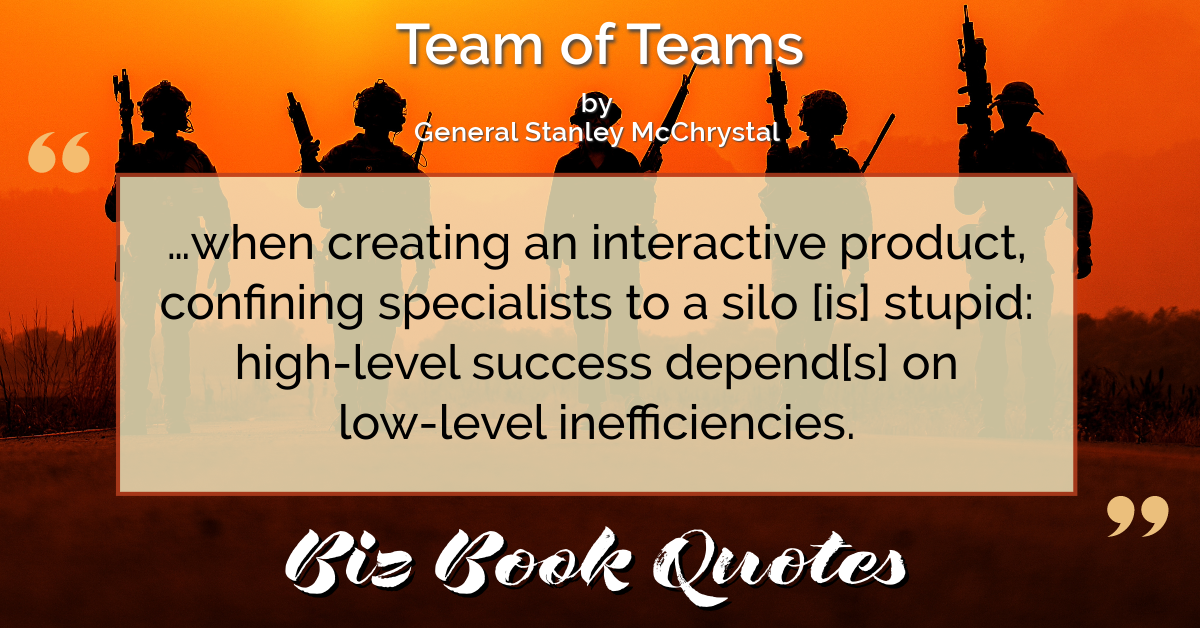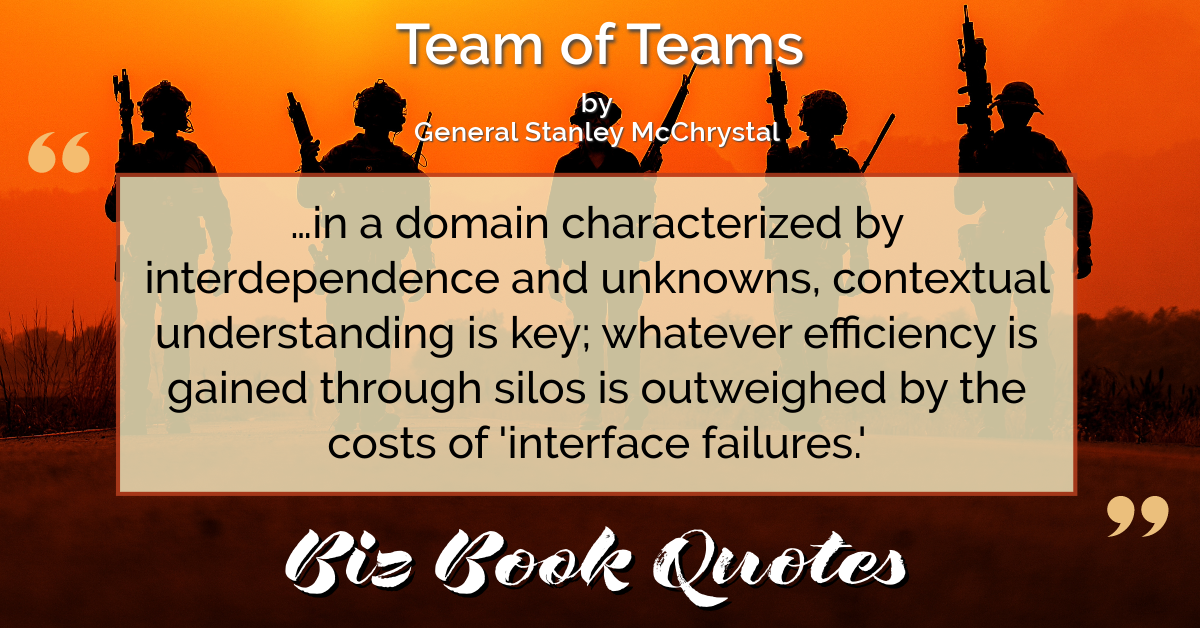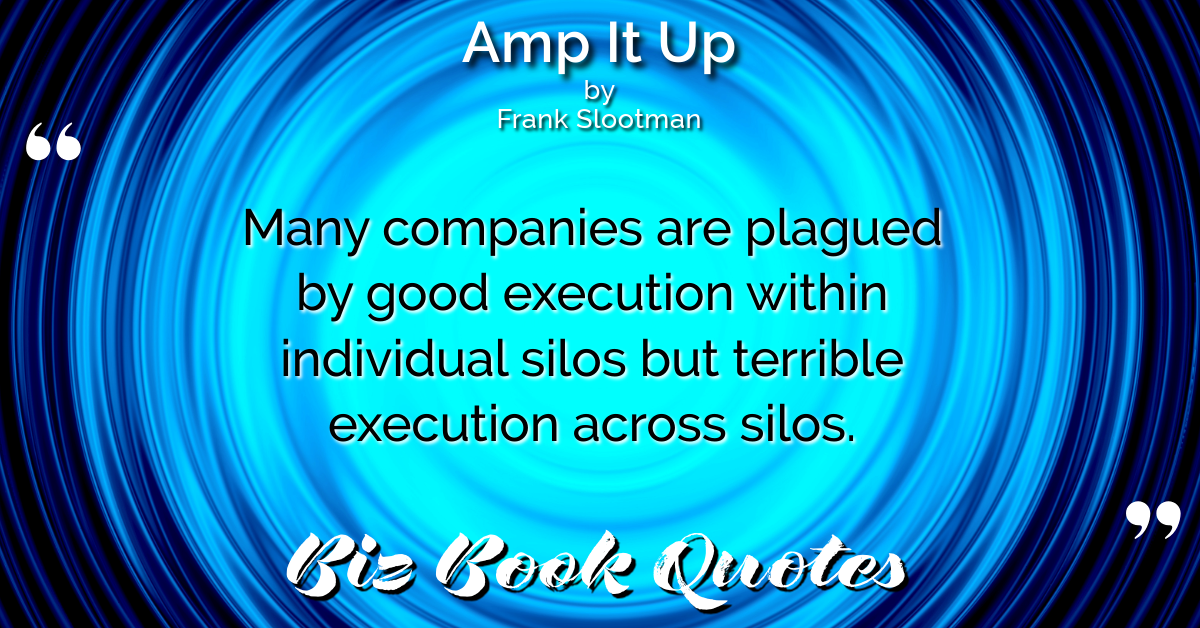 |
Innovation requires risks, people who are willing to think outside their boxes, perspectives from multiple silos, and more.
|
15 |
 |
Management-driven hierarchies are built to minimize risk and keep people in their boxes and silos. To change this more than incrementally is to fight a losing battle.
|
15 |
 |
Silos limit access to information about the big picture, and certainly any big-picture opportunities or threats.
|
116 |
 |
A management-driven hierarchy tends to relegate action into its silos.
|
124 |
 |
When people are siloed, they can’t work together. When data is siloed, it can’t work for you at all.
|
123 |
 |
…when creating an interactive product, confining specialists to a silo [is] stupid: high-level success depend[s] on low-level inefficiencies.
|
149 |
 |
…in a domain characterized by interdependence and unknowns, contextual understanding is key; whatever efficiency is gained through silos is outweighed by the costs of ‘interface failures.’
|
151 |
 |
Start-ups and established companies alike… simply can’t afford to be slowed down by organizational silos.
|
018 |
 |
Unique skill sets are silos on a team.
|
294 |
 |
Many companies are plagued by good execution within individual silos but terrible execution across silos.
|
083 |